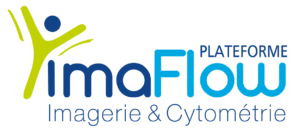Bio-Plex-200 system
The Bio-Plex Suspension Array System utilizes xMAP technology licensed from Luminex to permit the multiplexing of up to 100 different assays within a single sample. This technique involves 100 distinctly colored bead sets created by the use of two fluorescent dyes at various ratios. In a sandwich immunoassay, one antibody to a specific analyte is attached to a set of beads with the same color, and the second antibody against the analyte is attached to a fluorescent dye. A dual detection flow cytometer is used to identify the different assays based on bead color in one channel, and to quantify the analyte by measurement of the reporter dye fluorescence in another channel.



After the analytes have been captured and coupled with the detection antibodies, the Bio-Plex Instrument or Array Reader is then used to detect the identity and determine the quantity of the analytes.

The Bio-Plex Array Reader comprises four different components:
- Fluidics — the Bio-Plex Array Reader detects individual beads by flow cytometry. The fluidics system of the reader aligns the beads into single file as they enter a stream of sheath fluid and then enter a flow cell. Once the beads are in single file within the flow cell, each bead is individually interrogated for bead color (analyte) and assay signal strength (phycoerythrin fluorescence intensity).
- Lasers— the reader is a dual laser system. The 532 nm Nd:YAG laser (green « reporter » laser) is used to excite the phycoerythrin (PE) dye of the assay, for example, streptavidin-PE used for sandwich immunoassays. The 635 nm solid state laser (red « classify » laser) is used to excite the dyes inside the beads to determine their « color » or « region » and is also used for doublet discrimination by light scatter.
- Optics— the reader contains an optics bench with four detection channels. The dual lasers are precisely focused to excite an individual bead within the quartz flow cell. Upon excitation, the fluorescent signal emitted from the bead travels though the optics paths to the individual detectors.
- Detectors— the reader has four detectors, one for each of the optical paths shown in the figure above. A high-sensitivity photomultiplier tube (PMT) detector is used for the reporter channel. Photodiodes are used for the stronger signals of the classify CL1 and CL2 and doublet discrimination channels.
Two washing system are available in the core facility
Bio-Plex Pro wash station
Bio-Plex Pro wash station eliminates manual wash steps from Bio-Plex assays. It is specifically designed to perform Bio-Plex assay wash steps, but compatible with any standard xMAP assay.
Bio-Plex handheld Magnetic Washer





